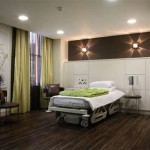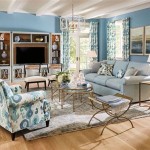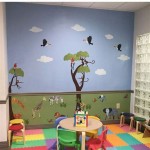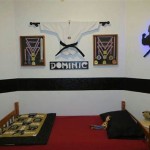Back to School Art Classroom Decor: Creating an Inspiring and Functional Space
The art classroom is more than just a space for creating; it is a sanctuary for imagination, experimentation, and skill development. The environment significantly influences student engagement and learning. When preparing for the new school year, the physical space demands careful consideration. Effective back-to-school art classroom decor balances aesthetic appeal with practical functionality, fostering creativity while maintaining organization and safety. This article explores key aspects of creating an inspiring and functional art classroom environment.
A well-designed art classroom encourages students to explore different mediums, techniques, and artistic concepts. It is crucial that the space is adaptable to various activities, from individual work to collaborative projects. Thoughtful decor choices are key to transforming the classroom into a vibrant, stimulating, and productive learning environment. The following points offer guidance in creating an effective art classroom.
Establishing Zones and Layout
An art classroom must have distinct zones for different activities. Clearly defined areas help in managing the flow of materials, students, and projects. Consider the following zones:
- Workstations: Individual or group workstations are necessary for students to create art. Tables or desks should be appropriately sized to accommodate the necessary materials. Consider arranging the workstations to maximize natural light and minimize disruptions.
- Storage: Ample storage is a cornerstone of an organized art classroom. Storage can include shelving units, cabinets, rolling carts, and drawers. Clearly labeling each storage place is vital. Consider segregating different materials by categories such as painting, drawing, sculpting, etc.
- Display Areas: These areas should be strategically placed to showcase student artwork, inspirational pieces, or examples of different techniques. Display areas promote a sense of pride in student work and provide opportunities for learning and discussion. Consider using bulletin boards, display rails, or designated wall spaces.
- Clean-up Zone: A dedicated sink area is vital for washing hands, brushes, and other tools. This prevents the spread of paints, glue, or other materials throughout the classroom and helps maintain cleanliness. Provide ample soap, towels, and a convenient waste disposal system.
The overall layout should prioritize flow and accessibility. Ensure that students can move freely between the different zones. Consider the arrangement of workstations, storage units, and the display areas can be modified to suit the needs of the students. Careful planning is essential to minimize disruption and maximize learning time.
Color Palette and Visual Stimulation
The colors of the art classroom can greatly impact the students' mood and creativity. While a blank slate can provide a fresh start, it might appear clinical and uninviting. The goal is to create a vibrant, yet balanced, color scheme.
- Consider a calming backdrop: Use neutral wall colors like white, cream, or light gray. This creates a versatile background that allows student artwork to stand out.
- Introduce pops of color: Add color accents through artwork, bulletin boards, and other decorative elements. Choose colors that complement student work and create a stimulating, yet balanced, visual environment. Consider using colors that stimulate creativity, with an understanding that students would also be exposed to these colors directly.
- Incorporate patterns and textures: Use rugs, bulletin boards, and other accessories to introduce visual interest. Avoid cluttering the space with too many patterns. Choose patterns and textures that are visually appealing.
Visual stimulation should be balanced with a sense of order. Avoid overwhelming the students with too much visual information. The goal is to create an environment that is both inspiring and conducive to the learning process.
Artwork Displays and Inspiration
The artwork displayed is a crucial element of the art classroom decor. Student work, whether completed or in progress, can be used to create an inspiring and motivating atmosphere. The display of professional artists' work can also be a valuable component of decor.
- Showcase student work: Rotate student artwork regularly to give each student the opportunity to be featured. Label artwork with the student's name, grade, and any relevant information about the project. Consider organizing displays by theme, technique, or grade level.
- Display inspirational artwork: Introduce students to various art styles, artists, and movements. Display prints, posters, or reproductions of famous artworks. Use artwork to spark discussions, teach artistic concepts, or expand students' perspectives.
- Offer tutorials and examples: Create displays that provide visual instructions for art techniques. These can be helpful reminders for students learning new skills. Display examples of finished projects to give students a sense of what is possible.
Arrange artwork displays in an organized and intentional manner. Ensure that the displays are well-lit and easily visible. Use a combination of hanging displays, bulletin boards, and three-dimensional installations to add interest and visual appeal. Make sure students are exposed to a wide range of artistic styles and techniques. The display of artwork should be a dynamic and ever-changing aspect of classroom decor.
Organization and Material Management
Safety and Hygiene
The art classroom is often filled with various materials and equipment, all of which pose safety and hygiene concerns. Establishing clear rules and procedures is essential to mitigate these risks.
- Proper Ventilation: Ensure adequate ventilation is available, especially when working with paints, solvents, and other potentially hazardous materials. Consider using fans and opening windows to circulate air properly.
- Safe Storage: Store all materials and equipment according to the manufacturers' instructions. Store hazardous materials in a locked cabinet and keep them out of reach of young students. Label storage containers clearly and accurately.
- First Aid: Have a readily accessible first-aid kit to address minor injuries. Create a first aid kit that includes bandages, antiseptic wipes, and any other necessary supplies. Post emergency contact information in a designated location.
- Hygiene: Emphasize the importance of handwashing and cleanliness. Provide sinks, soap, and hand sanitizers. Regularly clean and disinfect work surfaces, tools, and equipment.
Enforce specific safety procedures for using tools and equipment. Supervise students closely, especially when they are using sharp objects or power tools. Provide clear instructions on how to use and store these tools. The safety and well-being of the students should always be prioritized.

Rachel Petrucelli On Instagram My Back To School Bulletin Board Is Ready For Open House Toda Art Boards Classroom Management Decor

Art Bulletin Board Kit Room Decor Teacher In 2025 Boards Classroom

Big Dot Of Happiness Back To School First Day Classroom Decorations Teacher Wall Art Kids Room Decor 7 5 X 10 Inches Set 3 Prints

Art Teacher Classroom Door Sign Printable Decor

What Better Way To Welcome Your Students Than These Ideas For Bright Classroom Doors They Make Great Bul Art Decor Door

Teachers School Classroom Door Decoration Welcome Back To Singapore

Big Dot Of Happiness Back To School Diy Shaped First Day Classroom Decoration Cut Outs 24 Count

Kindergarten Classroom Decor Preschool Back To School

Art Room Organization With Mrs Ore
Back To School Clip Art Classroom Decor Made By Teachers
Related Posts







